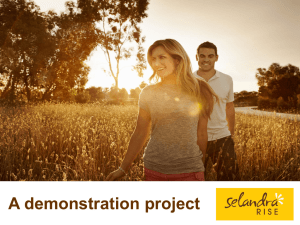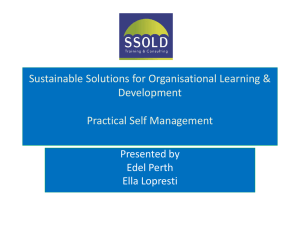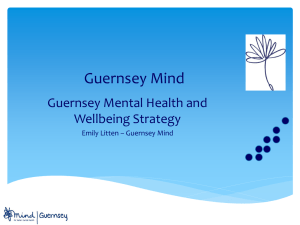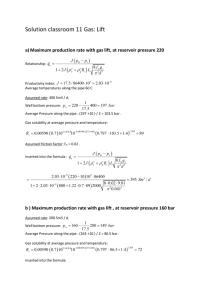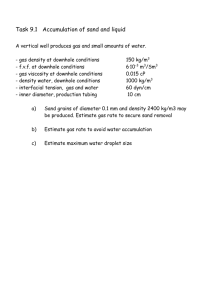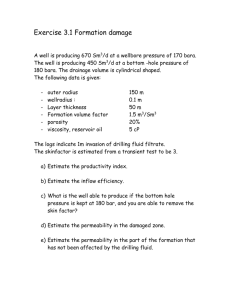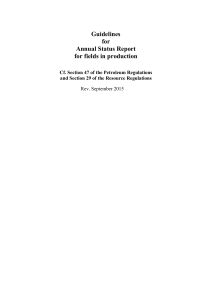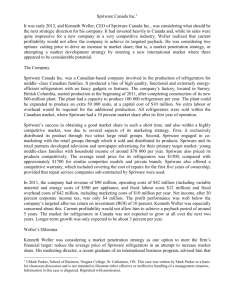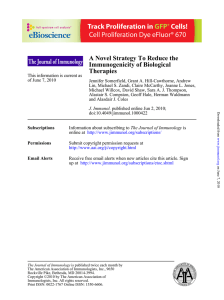Dupuis.-Cultural-Consonance - American Indigenous Research
advertisement
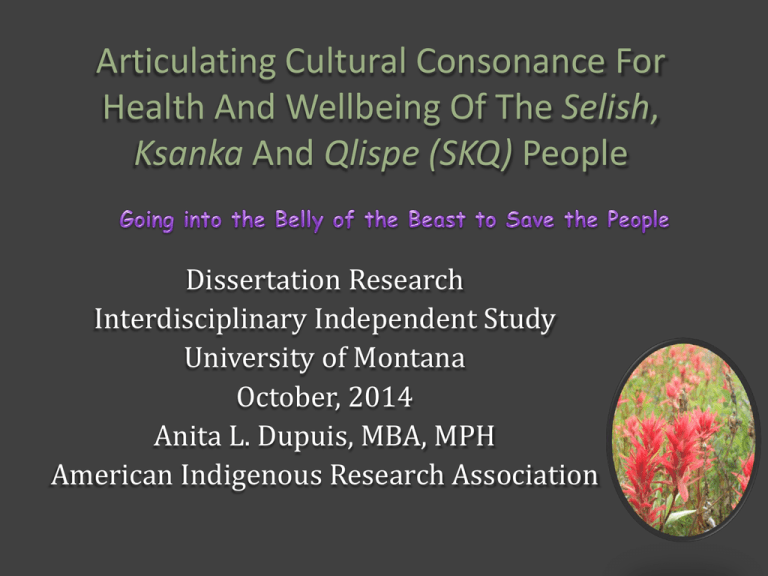
Articulating Cultural Consonance For Health And Wellbeing Of The Selish, Ksanka And Qlispe (SKQ) People Dissertation Research Interdisciplinary Independent Study University of Montana October, 2014 Anita L. Dupuis, MBA, MPH American Indigenous Research Association Dedicated to my father, James Dupuis, who attended the Ursulines and Chemawa Indian boarding schools from age 8 through high school. “You can’t ‘eat’ Indian Studies.” Cultural Consonance Defined “Cultural consonance is said to exist when one’s life reflects the shared cultural model of the values, attitudes, beliefs and behaviors within a particular societal cultural domain.” (Romney, Weller, Batchelder, 1986, Dressler, Oths, Gravlee, 2005, Furlow, 2003). Cultural consonance for health and wellbeing of the SKQ would exist when….. Tribal Government mirrors the values, attitudes, beliefs and behaviors as articulated by the SKQ People….and when….. The Tribal Community as a whole is a mirror reflection in its values, attitudes, beliefs and behaviors as articulated by the SKQ People…and when….. Individuals’ lives on a day-to-day basis reflect the values, attitudes, beliefs and behaviors of the cultural model for health and wellbeing articulated by the consensus of the SKQ People. First: Why this Study Community purpose: To engage the SKQ community in a process of articulating culturally consonant models of health and wellbeing for the twenty-first century. Academic purposes: To test the establishment of a cultural benchmark using a mixed methods approach, against which, people could assess their own and other’s cultural consonance for health and wellbeing. To identify a set of principles and guidelines for encouraging enhancement of health and wellbeing for generations to come. Because the values, attitudes, principles and practices from days past carry wisdom for today and the future. Because this study goes far beyond epidemiology and serves as a prompt of forward thinking and positive action to place our concentrated attention on the strengths of our cultural roots to heal, transform and transcend historical trauma for past, current, and future generations Theoretical Underpinnings Decolonizing Methodologies (CBPR, CBP Action Research; Insider Research) Anthropology Cognitive Anthropology; Applied Anthropology; Native, Indigenous Anthropology Consensus Theory (Romney, Batchelder and Weller, 1986, Weller, 2007) “Estimates the culturally appropriate or correct answers to the questions and individual differences in cultural knowledge.” (Weller, 2007 Respondents define terms and categories in their ‘own’ language Cultures as Systems (Deloria, 2006, Bastein, Kwagley, Bateson & Donaldson, 1991, Senge, 1990, Hotel & Scharmer, 2009) Socio-Ecological Systems (Stokols, 1994) Public Health Terminology for thinking in systems Blue: Preliminary Research Green: Dissertation Study 2 ,%-&#,. /''9* #&&-$) *. /0%$%* ! " #$%&'( $) * +,%-&#,. /'*-#/01 /* >? $. -* 2 $/'-+* ) ,%3/#,4$%*&5* 6 1 $#,. /" * 7" ) ,/" %* ; #&. $%%*-&< /#) %* +$/'," =* 8&1 1 0" ,-9* #$: $. 4&"*&"* . 0'-0#/'* . &" %&"/" . $** @&%%*&5*. 0'-0#$A*B&/#) ," =*%. +&&'%A* ) ,%3'/. $1 $" -A*) #/1 /4. *. 0'-0#/'*%9%-$1 %* ," -$##034&" C* ! " # # $%&'( )! " %*+%*$*), -" . +**)/! ! , 0)1" -)2-3. $423%5) 80'-0#/'*8&" %&" /" . $*1" -)&%6&7&6$248)). " # # $%&'( )2%6) " -52%&923" %24): +24' : )2%6); +44<+&%5) Green: Dissertation Study Lavender: Future Studies/Products 7" ) ,( ,) 0/''9* D7D* 8&1 1 0" /''9* D8D* G$'5H/%%$%%1 $" -*** ***I *2 &< *. 0'-0#/''9*. &" %&" /" -*/1 *7J * ***I **2 &< *. &0') *7*B$. &1 $*1 &#$*%&A*/" ) ******** +&< *< &0') *,-*B$" $K-*1 $J * 8&1 1 0" /'*6 %%$%%1 $" -**LM/1 ,'9A* M#,$" ) %A*8&1 1 0" ,-9*N#&03%O* ***I *2 &< *. 0'-0#/''9*. &" %&" /" -*/#$*< $J * ***I *2 &< *. &0') *< $*B$. &1 $*1 &#$*%&A*/" ) * +&< *< &0') *,-*B$" $K-*0%J * E #=/" ,F/4&" /''9* DE D* E #=/",F/4&" /'*6 %%$%%1 $" -PQ#/) ,4&" /'*Q#,B/'*G9%-$1 P80##$"-*Q#,B/'* G9%-$1 R**LQ#,B/'*N&( $#1 $" -A*%0B) ,( ,%,&"%*/" ) *5&#1 /'*-#,B/'*. &1 1 0" ,-9* &#=/" ,F/4&" %O* ***I **2 &< *. 0'-0#/''9*. &" %&" /" -*/#$*-+$*&#=/" ,F/4&" %*< $*< &#S*5&#J * ***I **2 &< *. &0') *< $*B$. &1 $*1 &#$*%&*/" ) *+&< *< &0') *,-*B$" $K-*&0#*&#=/" ,F/4&" %J * ***I **2 &< *< &0') *,-*+$'3*&0#*. &1 1 0" ,4$%A*5/1 ,',$%*/" ) *," ) ,( ,) 0/'%J * Green: Dissertation Study Lavender: Future Studies Purple: Ultimate Outcome of Program of Research G9%-$1 %*; $#%3$. 4( $* ) , -" 6$. +*) 8&" -$1 3&#/#9* . 0'-0#/'*1 &) $'* 5&#*+$/'-+*/" ) * < $''B$," =*&5*-+$* ! " # *3$&3'$* 88U I 2 V WI ! " # $ ) >-+,. %A*3&',. 9A* 3#&. $) 0#$*/") * 3#/. 4. $*/-*-+$**7A*8A*E * #$( $'%)) 71 1 $) ,/-$* . &" %$T0$" . $%* 5&#*/B0%,( $* B$+/( ,&#%* ))))), -" # =' *) >+*$43%5)?%) Dissertation: Four-part Study Overall goal: To identify and describe an SKQ cultural model for promoting health and wellbeing at the individual, community and organizational levels. Builds upon Masters Thesis, and the Traditional Living Challenge, a health promotion intervention completed for reducing cardio-vascular disease risk among the SKQ A content analysis to identify key constructs relevant to health and wellbeing of the SKQ. (Dupuis, 2010, A Review of Cultural Values, Practices and Beliefs for Enhancing Health and Wellbeing of the Selish, Ksanka and Qlispe People) A lifetime of participant observation in the SKQ Community Methodological Issues Mixed Methods Approach Research using existing resources Phase 1. Content Analysis to identify relevant constructs Primary data collection and analysis Phase 2. Qualitative interviews/focus groups to review/confirm relevant constructs Phase 3. Cultural Consensus Analysis (CCA) to determine if cultural consensus exists Phase 4. Qualitative Interviews/Focus Groups to review results of CCA Phase 1. Content analysis from existing sources Steps: SKQ-Specific Sources and Other-than SKQ-specific sources: 1. “For Indigenous Eyes (Minds) Only; A Decolonizing Handbook,” (Wilson & Yellowbird, Eds, 2005, 2012) 2. “Tikanga Maori; Living by Maori Values,” Mead, 2003 & “Nga Pepeha a naga Tipuna; The Sayings of the Ancestors,” Mead, 2001. 3. “The Sacred; Ways of Knowledge, Sources of Life,” Beck, Walters, Francisco,1977) 4. “ Indigenous Peoples’ Food Systems and Well-being; Interventions & Policies for Healthy Communities,” Kuhnlein, Erasmus, Spigelski, Burlingame, Eds, 2013. 5. “Consulting the Genius of the Place; An ecological approach to a new agriculture,” Jackson, 2010. 6. “The Fifth Discipline,; The art and practice of the learning organization,” Senge, 1990. 7. “Stewardship; Choosing service over self-interest,” Block, 1993. 8.” Leadership and the New Science,” Wheatley, 1999. 9. “Theory U; Leading from the future as it emerges,” Scharmer, 2009 . Phases 2 & 4. Qualitative Interviews/Focus Groups and Qualitative Thematic Analysis Phase 3. Cultural Consensus Analysis (CCA) (Romney, Batchelder, Weller, 1988) Formal CCA Assumptions: 1) a singular shared model exists, 2) responses are independent of each other, 3) questions are all on same topic & similar difficulty Categorical Data Only (Yes/No, Open Ended, Multiple Choice): to identify relevant constructs: Individual – ‘I’, Community ‘C’, Organizational ‘O’ levels N=30 (sample size determined by level of confidence one desires Participant Selection Criteria Expertise/Experience across I, C and O Knowledgeable – traditional cultural worldviews, values, lifeways w/an eye for maintaining their presence, wisdom and application into future. Openness to cultures as evolving, adapting, surviving and thriving natural systems. Data Collection and Analysis: Independent intuitive card sort of constructs from Phase 1 and 2 for inclusion/exclusion in the model N=3 sorts per participant; I,C,O Anthropac or Unicet software for analysis Results: 1) An estimate of the culturally correct answers by measuring frequency of inclusion of items in the card sorts , and 2) An estimate of individual differences in accuracy of reported information (cultural competence) Majority or modal items considered to be culture of a group (D’Andrade, 1987) Phase 4. Verification of Results of Phases 1 – 3 Data Collection and Analysis: CBPR assessment of consensus on community prioritization of constructs relevant to H & WB Focus Groups conducted with Edlers’ Advisory groups, Tribal Council, and other interested community groups as in Phase 2 (n = 3) Technology of Participation (ToP™) focused conversation and workshop method will be employed See sample results in next slide Table 2. Interrelationship with the Land and Its Non-Human ‘Inhabitants’ Plateau Tribes’ Perspective on Agriculture Traditional Sqelixwu = Flesh Practices to of the Land Enhance Animal and Plant Production Belief that the Any Cultivation of Fire to Aid Earth was a part the Earth (or Subsistence (Roots, of themselves and Improvements) Berries, Game, vice verse Are Crimes Travel) 210-220 years ago Humans Were to No parceling of the Use of Fire to Carry on the land Enhance Browse for Responsibilities Big Game of the Animals At End Times, To Enhance Growth Who Prepared the Earth Woman will of Berries and Earth for Humans Revert to Natural Other State Food/Medicinal Plants Sense of Above all --- No Use of Fire to Aid Responsibility to Tilling of the Soil Food Gathering & the Gifts we are Travel Given Value of the Land for Survival Contemporary Views – Translating the Values Evidence of Animism Protection and Conservation of Resources Belief in the Great Mysterious Power in All Things A Desire for Edible Landscapes in Backyards Recognition of Our Place in the Order of Creation – Dependent on Plants and Animals Worked All the Time on a Farm Humans Seen as Younger Brothers and Sisters of Mother Earth’s Creation Study Limitations Participants’ capacity to see beyond the current ‘lack’ in health and wellbeing to imagine a cultural model that would not only ‘promote’, but also work to ‘restore’ the health and wellbeing of the people As insider action-oriented research, it is intended to influence movement in the community, and therefore has an inherent bias Generalizable only to the Selish, Ksanka and Qlispe community, and potentially, only to the subset of the community with a certain bias for how to go about restoring and promoting health and wellbeing Focus on ‘forward thinking,’ rather than identifying a Current Model (Charting new territory; CCA may not hold up) Hu sukil Quqni, Chen es n pielsi! AnitaDupuisRoberson@gmail.com 406-250-7220




